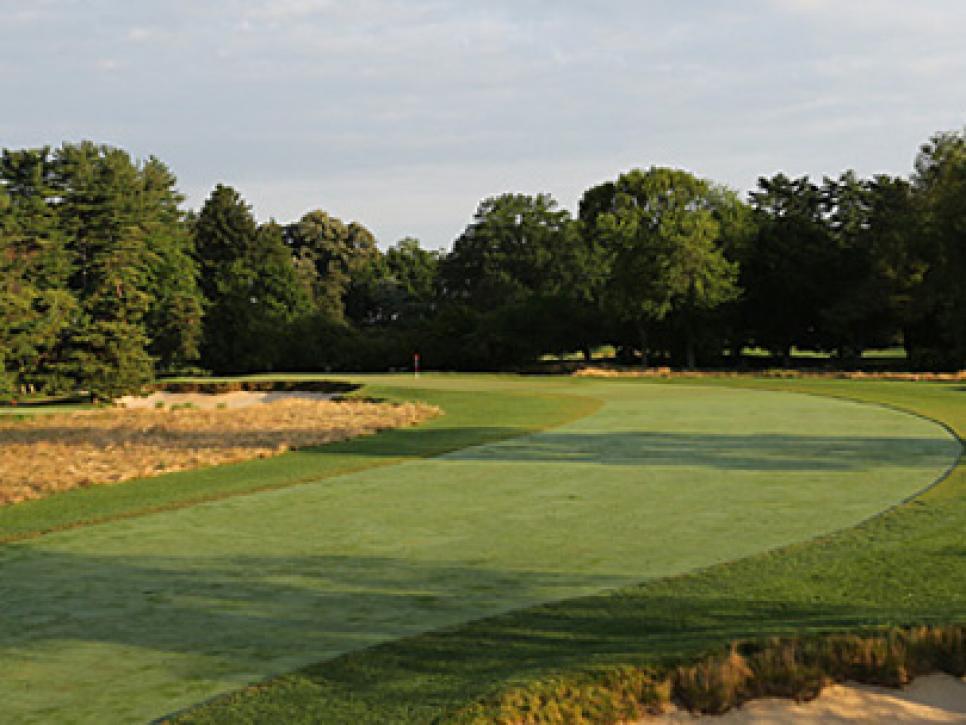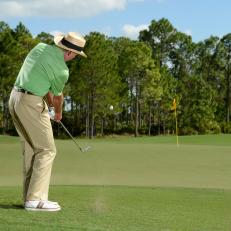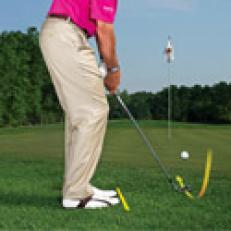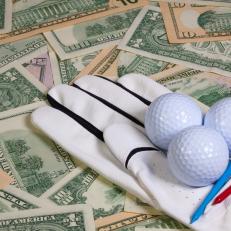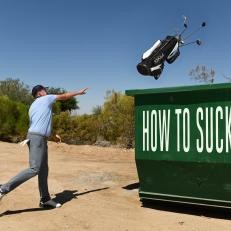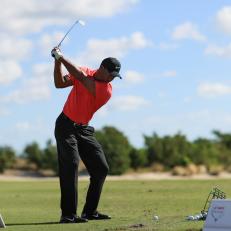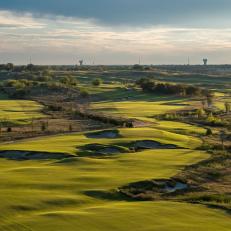11 Ways To Win At Merion
Think Precision Over Power
This is always a good strategy at the U.S. Open, where avoiding thick rough off the tee is a must. But this year, it's even more applicable with Merion playing to just under 7,000 yards on the scorecard. Players will probably refrain from using driver much -- unless they're trying to reach some of the course's shorter par 4s like Nos. 1, 7, 8 and 10. Of course, rain could have a huge effect on this approach, but if Merion is playing firm and fast, players will probably hit fairway woods off the tee, even on some of the long par 4s like Nos. 5 (504 yards) and 18 (521 yards).
Keep A Level Head
It takes a special attitude to persevere on a U.S. Open setup and no one knows that better than four-time champ Jack Nicklaus: "A difficult golf course eliminates a lot of players. The U.S. Open flag eliminates a lot of players. Some players just weren't meant to win the U.S. Open. Quite often, a lot of them know it." In other words, one way to handle the magnitude of the U.S. Open is to try to forget that it's the U.S. Open.
Get off to a fast start
Merion will have just two par 5s during the U.S. Open and both happen to be in the first four holes, including the 556-yard second (left). In other words, those players starting on No. 1 -- a 350-yard par 4, by the way -- would be wise to put some red numbers on their card before getting into the meatier middle of the course.
Think GIR, Not GRR
As the old saying goes, U.S. Opens are all about hitting "fairways and greens." While the fairway part may help lead to hitting more greens, it's the second part that's proven to be more important the past 11 years. In that span, the winner has led the field in greens in regulation (GIR) three times -- including Rory McIlroy's staggering 86.11% at Congressional (left) in 2011 -- and only twice has the champion finished outside the top 15 (Michael Campbell and Webb Simpson's T-16s in 2005 and 2012, respectively) in that stat.
Don't Get Comfortable
More than any other tournament, slow and steady is the way to claim U.S. Open glory. Rory McIlroy and Tiger Woods are recent runaway winners, but there have been just as many examples of players building a huge lead or challenge a tournament scoring record, only to collapse late. Players like T.C. Chen, Gil Morgan, Ricky Barnes (left) and even Arnold Palmer, who blew a seven-shot lead on the back nine Sunday at Olympic Club in 1966, have suffered meltdowns. That being said...
Be Within Reach After 36 Holes
Webb Simpson's win at Olympic last year broke a 16-year streak of eventual winners being within two shots of the lead at the tournament's midpoint. On half of those occasions, the 36-hole leaders went on to win. That includes Tiger Woods in 2000 (left) and Rory McIlroy in 2011, who share the record with a six-shot lead after two rounds. Simpson was six shots behind entering the weekend, but again, trying to pull off one of the biggest comebacks in U.S. Open history isn't the blueprint you want to follow.
Survive The Par 3s
For a "short course," Merion certainly packs a big punch when it comes to its one-shot holes. Sure, No. 13 is a mere 115 yards, but the other three? Try 236, 246 (No. 17, pictured) and 256. So while you might not see the pros hit many drivers off the tee, some of their longer clubs will still get a workout on holes that are really more like par 3.5s.
Avoid The Big Mistake
Golfers enter the U.S. Open expecting to make a lot of bogeys, but limiting the damage is key -- especially in the final round. From Dustin Johnson's triple bogey at Pebble Beach in 2010 to Phil Mickelson's double at Winged Foot on the final hole (left) in 2006, this tournament is littered with examples of players throwing away a chance to win by losing their patience and going for too much. The most recent example is Jim Furyk, who hooked his tee shot into the trees on the par-5 16th last year at Olympic after the USGA moved the tee box up on the final day. Furyk scrambled to make bogey, but the damage was done.
Tame The Par 4s
In most tournaments, the winner often sets himself apart from the rest of the field by taking advantage of the par 5s. At the U.S. Open, though, in part because there are often converted par 4s, it's the scoring average on the par 4s that makes a much bigger difference. In the last 16 U.S. Opens, the winner has led or been tied for the lead in par-4 scoring eight times, including Lucas Glover (left) at Bethpage in 2009. Only once in that time (Tiger Woods at Torrey Pines in 2008) has the champion ranked lower than T-8 in that stat. Conversely, 10 of the past 16 winners have finished outside of the top 10 in par-5 scoring average.
Don't Worry About Coming In Cold
It goes against logic, but most recent winners of the U.S. Open have arrived at the tournament lacking momentum. In fact, 12 of the past 17 winners made the U.S. Open their first win of the year. For four of those players -- Retief Goosen in 2001, Michael Campbell in 2005, Angel Cabrera (left) in 2007 and Graeme McDowell in 2010 -- the victory was their first-ever PGA Tour title.
Hope Tiger Has An Off Week
The World No. 1 is back to winning at a high clip and is the overwhelming favorite entering the season's second major. If he plays well, he'll be tough to beat, but he'll have to overcome a five-year major-less drought to win. Another thing in the field's favor? Last year's U.S. Open was the first time he's ever failed to win a major after leading or having a share of the lead heading into the weekend. In other words, follow Webb Simpson's lead and don't give up!
